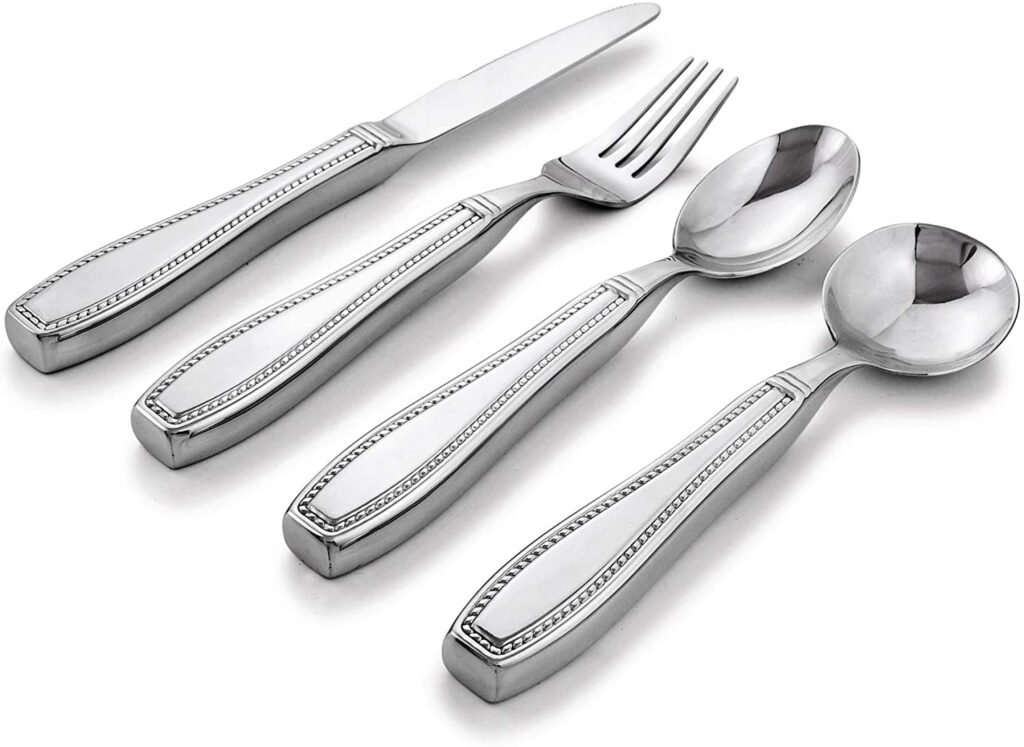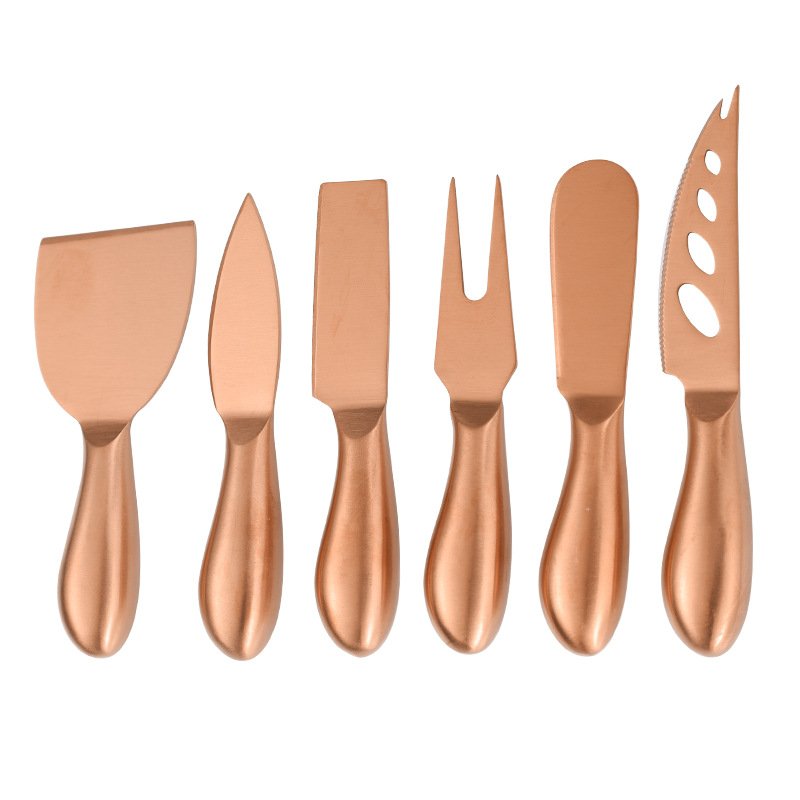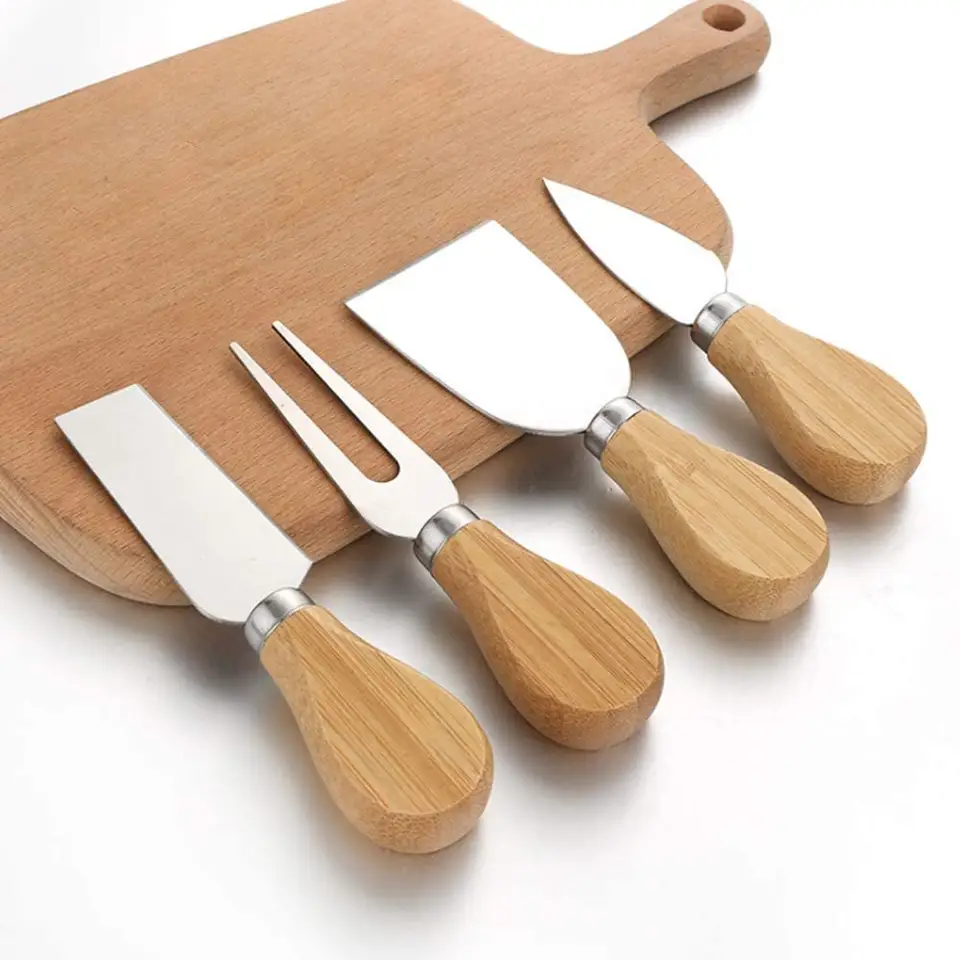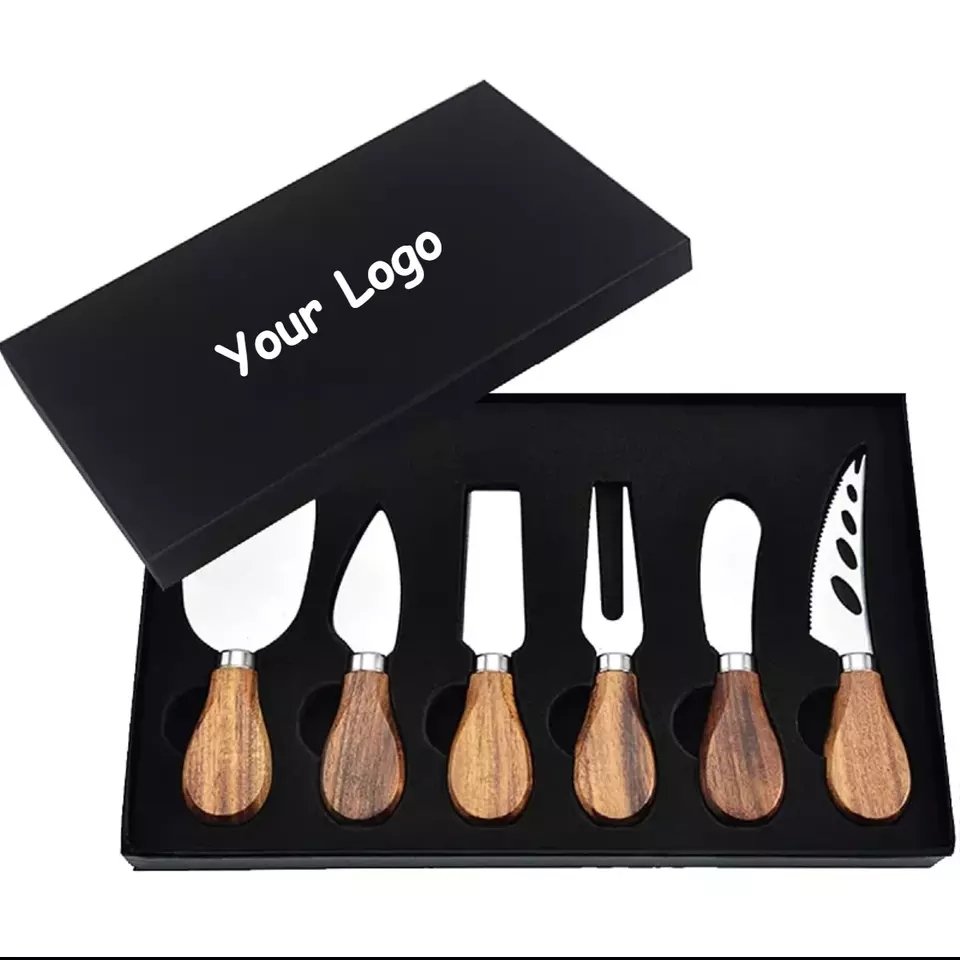Adaptive spoons and forks are a game-changer for many individuals with disabilities or special needs. But what makes them so unique and effective? Let’s explore this innovative solution.
Adaptive spoons and forks are specially designed utensils that help individuals with physical challenges eat independently. These cutlery pieces cater to those with conditions like arthritis, tremors, or autism, offering them enhanced usability.
Adaptive spoons and forks are specially designed utensils that help individuals with physical challenges eat independently. These cutlery pieces cater to those with conditions like arthritis, tremors, or autism, offering them enhanced usability.
Table of Contents
What is an adaptive spoon or fork?
Adaptive spoons and forks aren’t your average eating utensils. These innovative tools are designed to assist individuals who struggle with standard cutlery due to various conditions. Let’s break it down.
Adaptive spoons and forks aren’t your average eating utensils. These innovative tools are designed to assist individuals who struggle with standard cutlery due to various conditions. Let’s break it down.
Adaptive cutlery is specifically engineered to offer solutions to those who face difficulties using traditional utensils. This can include people with arthritis, Parkinson’s disease, cerebral palsy, or even autism. Let’s take a closer look at some of the key features:
Specialized Handles for Better Grip
One of the most notable features of adaptive spoons and forks is the handle design. These utensils often have larger, more ergonomic handles to provide a comfortable grip for those with limited hand strength or dexterity. Some handles are designed to be angled or cushioned to further reduce strain, making them more accessible for individuals with arthritis or muscle weakness.

Weighted or Stabilizing Designs
For individuals with tremors or unsteady hands, some adaptive spoons and forks feature weight at the handle or stabilizing mechanisms. These elements help counteract the impact of hand tremors, making it easier for users to feed themselves without spilling or dropping food.
Adjustability and Flexibility
Many adaptive utensils are adjustable, allowing for customization based on individual needs. For instance, some spoons and forks can be bent to different angles or fitted with specialized attachments to make them even more user-friendly. This adaptability ensures that the user can maintain a comfortable and stable eating posture, regardless of their condition.
What is the spoon and forks theory?
Understanding the theory behind adaptive spoons and forks can give us insight into how these tools can help people with specific needs. Let’s take a closer look.
The “spoon and fork theory” is about the application of adaptive design principles to eating utensils. These tools are carefully designed to make the eating process more accessible and manageable for those with physical impairments.
The “spoon and fork theory” in adaptive cutlery revolves around the idea of making basic eating tasks easier for people who struggle with typical utensils. Here are the main theories that guide adaptive cutlery design:
Understanding the Need for Accessibility
The concept of adaptive spoons and forks begins with a deep understanding of the user’s physical needs. For people with conditions like arthritis, Parkinson’s disease, or cerebral palsy, regular spoons and forks are often too difficult to use. The theory behind adaptive cutlery is that design should empower users to perform daily tasks, like eating, independently, without frustration or dependence on others.
The Role of Ergonomics
Ergonomics plays a central role in adaptive cutlery. The theory emphasizes that the user’s comfort should always be the primary concern. Handles are made to fit comfortably in the user’s hand, providing a balance of weight and texture that minimizes strain. This allows individuals to enjoy a more natural and comfortable eating experience, while reducing pain or discomfort that might occur with traditional utensils.
Stability and Control
In the case of tremors or involuntary movements, adaptive spoons and forks are designed to enhance stability. By adding weight, using flexible materials, or introducing stabilizing features, these tools ensure that the user maintains control of the utensil while eating. The theory is that stability is crucial in reducing frustration and promoting independence.
Is there a spoon that counteracts tremors?
For people with tremors, eating can become a frustrating task. But with the right design, spoons can be a powerful tool to reduce the effects of tremors. Let’s see how adaptive spoons make this possible.
Yes, there are spoons specifically designed to counteract tremors. These spoons feature stabilizing mechanisms or weighted handles that help keep the utensil steady, making it easier for individuals to eat without spilling or dropping food.
Adaptive spoons designed for people with tremors typically feature mechanisms that help to stabilize the utensil and counteract shaking. Let’s explore how these spoons work and the various features that make them effective:
Weighted Handles for Tremor Control
Many adaptive spoons are designed with weighted handles. This added weight helps to reduce the effects of tremors by stabilizing the spoon during use. The weight ensures that the spoon remains steady and more manageable for individuals whose hands may shake involuntarily.
Stabilizing Technology
Some adaptive spoons incorporate advanced technology, such as sensors or gyroscopes, that help detect and counteract shaking. These spoons adjust automatically, maintaining the spoon’s orientation regardless of hand tremors. This technology provides a hands-free solution to controlling tremors, offering significant relief for users.
Flexible or Bendable Features
Another approach to counteracting tremors is the ability to adjust the spoon’s angle or bend the handle. This allows users to find the most comfortable position to minimize shaking and maintain better control while eating.
What is a spoon and a fork combined called?
Combining a spoon and a fork into one utensil might seem unusual, but it can be a practical solution for people with disabilities. What do we call such a tool? Let’s find out.
A spoon and fork combined is often referred to as a “spork.” This hybrid utensil serves the functions of both a spoon and a fork, making it an ideal choice for individuals with limited mobility or coordination.
The spork is a simple but effective solution for people who struggle with using separate spoons and forks. This combination utensil is not only convenient but also highly functional for those with physical challenges. Let’s look at how the spork works:
A Multi-Functional Design
The spork’s design integrates the features of both a spoon and a fork, offering users the flexibility to scoop and spear food with one utensil. This is particularly helpful for individuals who struggle with using two utensils at once, as the spork can handle a variety of foods without switching tools.
Ergonomically Optimized
Some sporks are designed with adaptive features, such as larger handles, rubber grips, or adjustable angles, to make them even more accessible for individuals with disabilities. The ergonomic handle provides comfort and ease of use, reducing the effort needed to manipulate the utensil.
Practical for Various Conditions
The spork is especially beneficial for those with limited hand mobility, such as individuals with arthritis or other conditions that affect dexterity. It can be used effectively for a variety of foods, from soups to solid meals, without the need for multiple utensils.

What is the adapted cutlery for autism?
For individuals with autism, sensory sensitivities and motor difficulties can make traditional cutlery challenging. Adapted cutlery can offer significant benefits. Let’s look at how.
Adapted cutlery for autism often features sensory-friendly designs, including softer grips, smooth edges, and weighted handles to provide better control and comfort. These tools help individuals with autism eat independently and comfortably.
Adapted cutlery for autism is designed with an understanding of the unique challenges individuals on the autism spectrum face. These challenges often include sensory sensitivities, motor issues, and difficulties with coordination. The adapted cutlery focuses on addressing these specific needs:
Sensory-Friendly Designs
Many individuals with autism have heightened or diminished sensory sensitivity. To address this, adaptive cutlery is designed with soft, non-slip handles or textures that are easy to hold and gentle on the hands. Some utensils are made with bright colors or simple shapes to help attract the user’s attention and keep them engaged.
Customizable Features
For those with motor difficulties or limited hand strength, many adaptive utensils are customizable. This means the handles can be adjusted for size and angle, and the utensil can be weighted for better control. The ability to personalize the cutlery makes it easier for the user to eat independently and comfortably.
Reducing Stress and Frustration
Using adaptive cutlery can significantly reduce the stress that comes from using traditional utensils. The easy-to-grip, stable, and gentle designs help individuals with autism avoid frustration, making mealtimes more enjoyable and less stressful.

What are the benefits of adaptive cutlery?
Adaptive cutlery brings significant benefits to people with various physical or neurological conditions. Let’s explore these advantages and how they enhance everyday life.
Adaptive cutlery provides numerous benefits, including improved independence, reduced pain, and better eating experiences for individuals with physical or sensory challenges. These utensils are life-changing for many.
Adaptive cutlery can significantly improve the quality of life for individuals who have difficulty using standard utensils. The benefits go far beyond convenience; they include enhanced independence, better control, and a reduction in frustration. Let’s look at some of the major benefits:
Enhanced Independence
One of the most significant benefits of adaptive cutlery is the ability to eat independently. For individuals with conditions such as arthritis, Parkinson’s disease, or cerebral palsy, adaptive utensils offer a way to perform a basic daily task without needing assistance from others. This fosters a sense of independence and dignity.
Pain Reduction
Adaptive cutlery is designed with comfort in mind. For individuals with arthritis or muscle weakness, traditional utensils can cause pain or discomfort. Adaptive spoons and forks reduce strain on the hands and wrists, making eating more comfortable and less painful.
Improved Eating Experience
By making it easier to grip and use cutlery, adaptive tools improve the overall eating experience. Whether it’s counteracting tremors or reducing the effort needed to hold the utensil, adaptive cutlery allows individuals to enjoy meals with less stress, promoting a more positive experience.
Adaptive spoons and forks are more than just utensils; they empower individuals to eat independently, comfortably, and confidently. Their role in promoting autonomy and improving daily life is invaluable.





